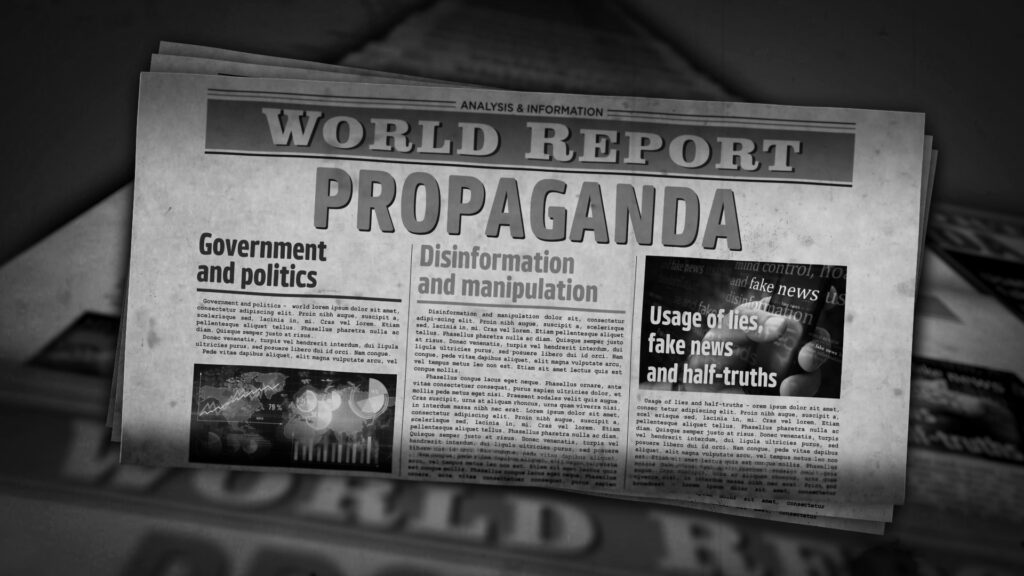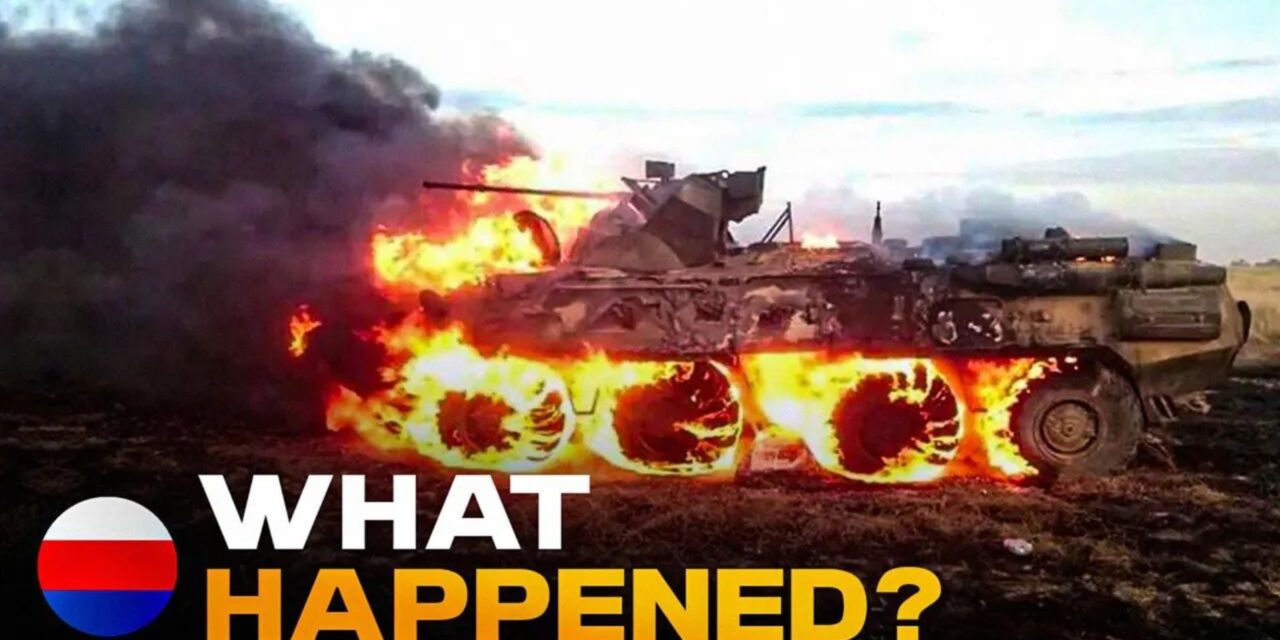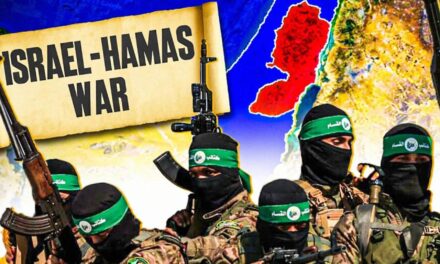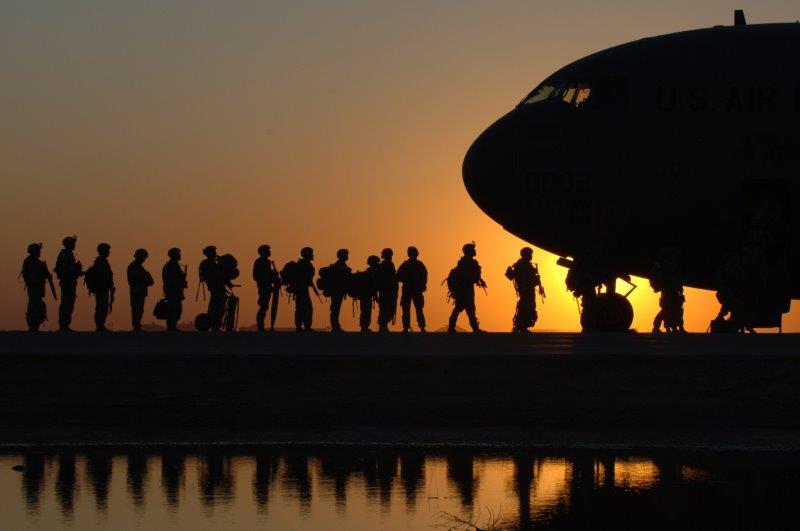Hi friends! In today's post we're diving into the latest on Russia's offensive campaign in Ukraine. The Institute for the Study of War (ISW) provides incredibly helpful daily analysis on this topic that I'll be summarizing for you.
Key Takeaways
Before we get started, here are some of the key takeaways from ISW's most recent Russian Offensive Campaign Assessment starting on January 10, 2024:
- The Kremlin’s effort to use the mythos of the Great Patriotic War (Second World War) to prepare the Russian public for a long war in Ukraine is at odds with Russia’s current level of mobilization and Russian President Vladimir Putin’s rhetorical attempts to reassure Russians that the war will not have lasting domestic impacts.
- The Kremlin may be instructing actors in the Russian-backed breakaway republic of Transnistria to set information conditions for a possible false-flag operation in Transnistria as part of wider Kremlin efforts to destabilize Moldova.
- Iran has reportedly developed a new Shahed drone for Russian forces to use against Ukraine and is “close” to providing Russia with surface-to-surface ballistic missiles and systems.
- Lithuania announced a new long-term military aid package to Ukraine worth 200 million euros (about $220 million) on January 10.
Now let's get into the details!
The Kremlin's Messaging Contradicts Reality
The Kremlin often tries to portray the war in Ukraine as akin to the Great Patriotic War (World War II), invoking ideas of a long and difficult fight. However, Russia's actual mobilization efforts don't match this narrative. Putin has tried to reassure Russians that the war won't have major domestic impacts, which seems at odds with the World War II comparisons. Here's how ISW summarizes this contradiction:
"The Kremlin’s effort to use the mythos of the Great Patriotic War (Second World War) to prepare the Russian public for a long war in Ukraine is at odds with Russia’s current level of mobilization and Russian President Vladimir Putin’s rhetorical attempts to reassure Russians that the war will not have lasting domestic impacts."
This mixed messaging likely shows that while Putin wants to keep morale up on the home front, Russia lacks the resources and will for an all-out war mobilization like in World War II. The rhetorical World War II allusions are more for propaganda purposes than representing Russia's actual capabilities.
Transnistria Used for False Flag Operations
ISW assesses that Russia may be planning false flag operations in Transnistria in order to destabilize neighboring Moldova. Transnistria is a breakaway state in Moldova backed by Russia.
"The Kremlin may be instructing actors in the Russian-backed breakaway republic of Transnistria to set information conditions for a possible false-flag operation in Transnistria as part of wider Kremlin efforts to destabilize Moldova."
Russia could use fabricated attacks in Transnistria as a pretext for escalating against Moldova, similar to the debunked narratives Russia used to justify invading Ukraine. Undermining Moldova could also weaken Ukrainian grain exports that rely on western Black Sea ports.
Undermining Ukraine's Grain Exports
In fact, ISW specifically notes that destabilizing Moldova could be Russia's way of disrupting Ukraine's agricultural exports:
"The Kremlin may also be reviving its efforts to leverage Transnistria to create instability in Moldova in order to undermine Ukrainian grain exports along the western coast of the Black Sea."
Ukraine's grain exports have continued successfully despite Russia's invasion, thanks to the establishment of a secure shipping corridor. Threatening Moldova could be one way for Russia to threaten this crucial economic lifeline for Ukraine without directly attacking ships.
Did You Know: Ukraine was the world's 5th largest grain exporter in 2021, exporting $12.9 billion worth of grain that year. This highlights the global importance of Ukraine's agricultural exports via the Black Sea, which Russia is attempting to undermine.
Iran Supporting Russia with Drones and Missiles
Iran is reportedly providing new types of drones to Russia for use in Ukraine:
"Iran has reportedly developed a new Shahed drone for Russian forces to use against Ukraine and is “close” to providing Russia with surface-to-surface ballistic missiles and systems."
This Iranian support has been crucial in bolstering Russia's weapon supplies amid sanctions limiting Russia's access to microchips and other military technologies. The new Shahed drone model could help Russia adapt as Ukraine shoots down more Iranian-provided drones.
Iran may also begin directly supplying ballistic missiles soon. Russia's reliance on foreign missiles highlights its weapons shortages, since ballistic missiles seem more effective in some situations in Ukraine compared to Russian-made alternatives.
Western Military Support to Ukraine
Ukraine continues to depend on Western military aid as it defends against Russian aggression. Let's look at some recent developments on that front.

EU Ramping Up Artillery Shell Production
The European Union aims to provide a huge number of artillery shells to Ukraine by spring 2024:
"European Union (EU) Internal Market Commissioner Thierry Breton stated that the EU will be able to supply Ukraine with one million shells by spring 2024."
This comes as Ukraine faces dire artillery ammunition shortages on the frontlines. More EU shells could help sustain Ukraine's defense against Russia's larger army.
Lithuania's $220 Million Aid Package
Lithuania is also stepping up its military assistance to Ukraine:
"Lithuania announced a new long-term military aid package to Ukraine worth 200 million euros (about $220 million) on January 10."
That adds to the 1.4% of Lithuania's GDP already given in bilateral aid to Ukraine. Securing long-term assistance deals will be key as the war drags on.
| Country | Military Aid to Ukraine (as % of GDP) |
|---|---|
| Lithuania | 1.4% |
| United States | 0.3% |
Table: Comparing Lithuania and US Military Aid to Ukraine (source: ISW)
Russia's aggression with Ukraine could have a very destabilizing in the region and even lead to a total collapse of the Putin regime.
Russia's Propaganda Machine
How is Russia portraying this conflict at home amid recent setbacks? ISW provides some great insights into Russia's propaganda and media operations.

A core challenge for the Kremlin is managing Russia's nationalist war bloggers, who criticize Russia's military leadership. The Kremlin wants to control these influencers, but as ISW notes:
"The very characteristics that make the Russian ultranationalist milblogger community popular – its perceived independence from and willingness to criticize the Russian government – likely continue to complicate the Kremlin’s efforts to co-opt the community as Kremlin mouthpieces."
Russia also continues trying to falsely portray Ukraine as fractured and losing the will to fight. But as one Ukrainian sergeant said:
“Morale is all right...The Russians hoped that our soldiers would run away, but no one did.”
Despite Russia's informational attacks, the reality is that Ukrainian resolve remains unbroken. We break this down in much more detail regarding what Putin is actually telling Russian citizens here.
Latest Frontline Developments
Let's turn our attention to the actual situation on the ground in Ukraine. Here are some key recent developments:
Advances Near Bakhmut and Donetsk City
Russia is continuing its grinding offensive in eastern Ukraine:
"Russian forces advanced southwest of Bakhmut and Donetsk City and in the east (left) bank of Kherson Oblast amid continued positional engagements along the entire front."
Slow, incremental gains around Bakhmut and Donetsk allow Russia to claim progress while putting strain on Ukrainian defenders.
Did You Know: The Kerch Strait Bridge that connects Russia to occupied Crimea is the longest bridge in Europe at 12 miles (19 km). This made it a prized target for Ukrainian striking forces, who attacked the bridge in October 2022
Kherson Oblast Sees Positional Fighting
Meanwhile, the stalled frontline in Kherson Oblast sees daily positional battles but little change in territory:
"Ukrainian forces maintained positions in east (left) bank Kherson Oblast as of January 8, and there are no confirmed changes to this frontline area. Positional battles continued near Krynky in east bank Kherson Oblast."
Ukraine's defenders in this region continue holding against Russian attacks.
Navy to Expand Naval Infantry Units
Finally, Russia's navy is set to expand its naval infantry units:
"Russian Navy Commander-in-Chief Admiral Nikolai Yevmenov stated on January 10 that the Russian military plans to reorganize the five existing naval infantry brigades of Russia’s fleets into naval infantry divisions and the Caspian Flotilla’s naval infantry regiment into a naval infantry brigade in the medium-term."
This reflects Russia's significant losses among its naval infantry over the course of the war. Reorganization may help rebuild this depleted combat force.
January 11: Russia Resumes Limited Offensive Operations
On January 11, 2024, Russian forces resumed limited offensive operations along parts of the frontline after several weeks of largely positional fighting.

A Russian milblogger claimed that Russian forces captured the settlements of Ivanivka, Synkivka, and Stelmakhivka northwest of Kreminna. However, ISW has not independently verified these claims of Russian advances. ISW previously assessed that the Russian forces may attempt limited offensive pushes in the Kreminna area in the near future.
Meanwhile, west of Kreminna near Torske, Russian and Ukrainian sources stated that positional engagements are ongoing. Russian forces likely aim to push west from Torske towards critical Ukrainian positions at Terny, but have not made confirmed advances past Torske.
In Donetsk Oblast, elements of the Russian 1st Army Corps reportedly continued assaults around Bakhmut. A Russian source claimed that Russian troops advanced near Klishchiivka, south of Bakhmut. ISW will cover subsequent reports of any confirmed Russian advances in this area in future campaign assessments.
Along the southern axis, Russian and Ukrainian sources reported ongoing fighting around Velyka Novosilka and Chervone. Russian forces have not made confirmed advances, but are likely trying to push north towards the key N15 highway.
Russian Defense Minister Sergei Shoigu reiterated claims that Ukraine has suffered major equipment and personnel losses. However, ISW has previously assessed these Russian claims to be exaggerated. Reports indicate Russia has suffered over 134,000 casualties trying to invade and occupy Ukrainian territory since February 2022.
Looking ahead, Russian forces will likely continue undertaking limited offensive pushes amid positional fighting along most frontline areas. Russia’s objectives remain seizing more Ukrainian territory to falsely legitimize its illegal annexation claims. However, Russian forces face stiff resistance from Ukraine’s defenders.
January 11: Russia Makes Marginal Gains Near Kreminna
On January 11, Russian forces marginally advanced near Kreminna, though Ukrainians maintain most positions in the area. Russian milbloggers claimed that Russian forces then captured unspecified settlements northwest of Kreminna. Ukrainian sources stated that positional fighting continues near Torske west of Kreminna.
ISW has not observed visual confirmation of the claimed Russian advances near Kreminna. However, previous reports indicated Russian forces were preparing for intensified offensive operations around Kreminna. The Russian military may be attempting to push west towards the strategic town of Terny.
Did You Know: Russia's warship Moskva, the flagship of its Black Sea Fleet, sank in April 2022 after being struck by Ukrainian anti-ship missiles. This was Russia's largest warship lost in combat since World War II.
In the Kupyansk direction, the spokesperson for a Ukrainian brigade stated that Russian forces are using fewer loitering munitions, possibly due to cold weather. Russian infantry attacks remain limited in this area. The 7th Motorized Rifle Brigade continues operating near Bilohorivka, Luhansk Oblast.
Overall, ISW continues to assess that Russian forces are unlikely to make operationally significant advances anywhere along the frontline in the near future. Localized Russian gains have come at tremendous cost in lives and equipment. Ukraine's defenders remain resilient and their lines largely hold.
January 11: Fighting Continues Around Avdiivka
Russian and Ukrainian forces continued positional engagements around Avdiivka on January 11. Russian sources stated that positional fighting occurred near Ocheretyne northwest of Avdiivka and in the industrial zone southeast of the city.

Some Russian milbloggers claimed that Russian forces advanced up to one kilometer near Pervomaiske west of Avdiivka on January 10. However, ISW has not observed visual confirmation of this alleged progress.
The Ukrainian General Staff reported that Russian forces unsuccessfully attacked in the direction of Krasnohorivka, just west of Avdiivka. Krasnohorivka remains firmly under Ukrainian control.
Elements of Russia's 7th Airborne Division are reportedly operating near Avdiivka and conducting assaults in the area. However, Russian offensive operations in the Avdiivka direction remain largely stalled.
ISW continues to assess that Russian forces are unlikely to make dramatic gains around Avdiivka or break Ukrainian defensive lines. The costs of Russia's repeated frontal assaults in this area continue to mount.
Conclusion Of The Russian Offensive Campaign Assessment
To wrap up, Russia's rhetoric about annexing Ukrainian territory continues to exceed its actual military capabilities. Ukraine has maintained its resolve despite Russia's brutality. With the support of Western allies, Ukraine may be able to repel Russia's offensive campaign, but Russia is adaptable and the conflict remains dynamic.
I hope this breakdown has helped summarize the latest developments in Russia's offensive campaign against Ukraine! Let me know if you have any other questions in the comments.
Frequently Asked Questions
What is the Institute for the Study of War (ISW)?
ISW is a think tank that produces detailed assessments on geopolitical and military developments, with a focus on the Russia-Ukraine war. Their daily campaign assessments provide incredibly helpful insights.
How does ISW get their information?
ISW analyzes open source intelligence, including Russian, Ukrainian, and Western reporting and social media. They also
What are the objectives of Russian forces in Ukraine?
Russian forces continue offensive operations with the objective of illegally annexing more Ukrainian territory after Russia’s initial invasion of Ukraine in February 2022. Russian authorities stated that Russian forces aim to capture the full territory of Ukraine’s Donetsk and Luhansk oblasts as part of the Kremlin’s maximalist war aims.
How have Russian force generation efforts evolved?
Russian military officials reported that Russian force generation efforts have continued adapting amid heavy losses, including by reforming naval infantry brigades into larger divisions. However, Russia still faces challenges generating sufficient combat power without resorting to general mobilization of its population for large-scale war.
What Russian violations of laws of armed conflict have been reported?
Prominent Russian opposition groups and international observers have reported that Russian officials committed grave violations of the laws of armed conflict during Russia's invasion of Ukraine. This includes deliberate targeting of civilians, executions and filtration camps in occupied areas, and the use of cluster munitions and landmines against civilian targets.
How has fighting progressed in the Black Sea region?
The Russian Black Sea Fleet has faced serious setbacks since Ukraine's successful strike on the Kerch Bridge. Ukrainian sources indicated on January 10 that Russian forces moved more military assets to Crimea and Kherson Oblast to compensate for losses. Russia relies heavily on the Black Sea Fleet to sustain its campaign in southern Ukraine.
What territory have Russian forces captured recently?
Russian forces made incremental advances around Bakhmut and other parts of Donetsk Oblast in late 2022 and early 2023. However, Ukrainian officials stated these localized gains came at a very high cost for Russian troops. Russia failed to achieve its stated objective of capturing the full Donetsk Oblast by the end of 2022.











